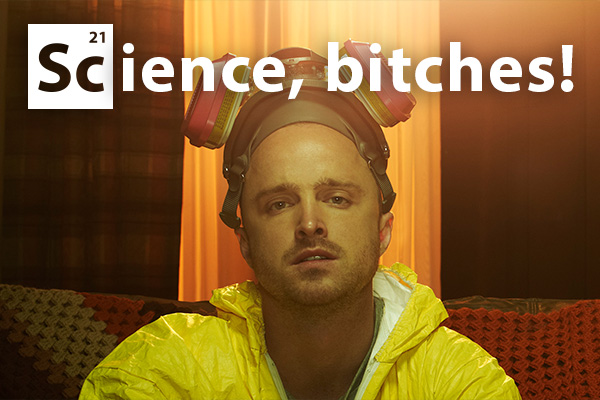Science, Bitches | Issue 14
Yeastie beasties
First, though: what actually is yeast? The kind used in bread, baker’s yeast, is called Saccharomyces cerevisiae. A bit of a mouthful so we’ll stick to calling it yeast. This guy is a single-celled fungus – and, yes, it is related to mushrooms and mould – that’s only a couple of thousandths of a millimetre in size! Yeasts and other fungi aren’t bacteria or animals; they’re not even plants, despite mushrooms being a pretty common vegetable in a stir-fry. Fungi are their own classification entirely. Yeast is pretty important in bread making – it’s the ingredient that makes bread rise to be lighter and airy.
When we talked about beer, the yeast ate the sugars from the grains to produce carbon dioxide – the bubbles – and alcohol. The core ingredients in bread are yeast, flour, water and salt. Where does the sugar come from? Flour is full of starches, which are long-chain sugars. The yeast can break these long chains down to use as a food source, which means they will produce carbon dioxide. This is what makes the bread rise! Also in flour is gluten, a protein that makes flour sticky when mixed with water, and holds the bread together. Yeast can be a tricky beast though; you have to treat it well to get it to make your bread excellent. It likes warm temperatures – so if you’re making bread in an icebox of a flat I suggest letting it rise in the hot water cupboard.
Why not combine our favourite yeast-filled products? You can use beer to make bread! This can be done a couple of different ways: you can use leftover yeast from brewing beer to make bread; or you can use a store-bought beer to make beer bread. The yeast in the bottle can be enough to make bread with, and it tastes pretty awesome. You could even put some marmite – also made from yeast – on your bread for a triple yeast hit. (Too much?)
What about other baking that rises, and doesn’t have yeast? How do cakes and cookies rise? To get air into these foods, to make them rise, we use a little bit of chemistry to get the job done. Ever wondered what baking powder or baking soda does? Both of these products have sodium bicarbonate, which is a basic compound. When it reacts with something acidic it produces carbon dioxide, just like our yeast does in bread! Also like when you made that baking soda volcano back in primary school. Baking powder is a mixture of sodium bicarbonate and a weak acid. When baking powder is mixed in to the baking, and put in the oven, it reacts. Baking soda, on the other hand, needs an acid added to react. This means a recipe with baking soda will have something acidic in the recipe too, such as lemon juice or even milk. We do pretty well without yeast here, but you won’t see me making beer or bread with baking powder!
Now that you know the secrets of yeast, grab a beer and make some bread. Then grab some more beer, and have some friends over to try your yeast creations. Cheers to beer and bread, cheers to yeast, and cheers to the science that taught us how to use it, bitches.



